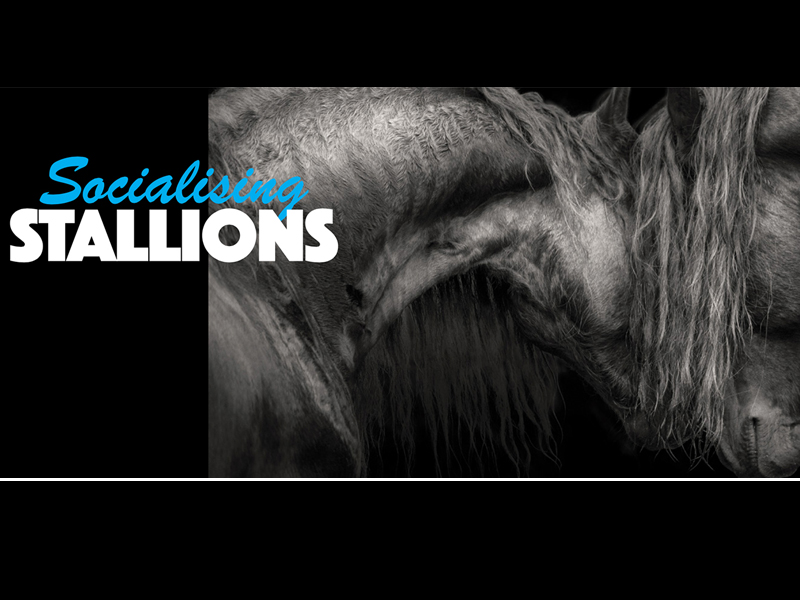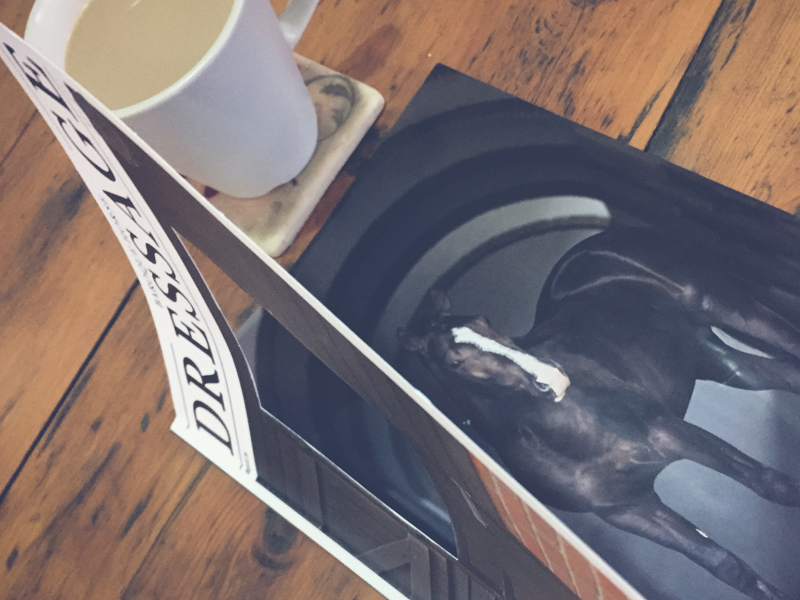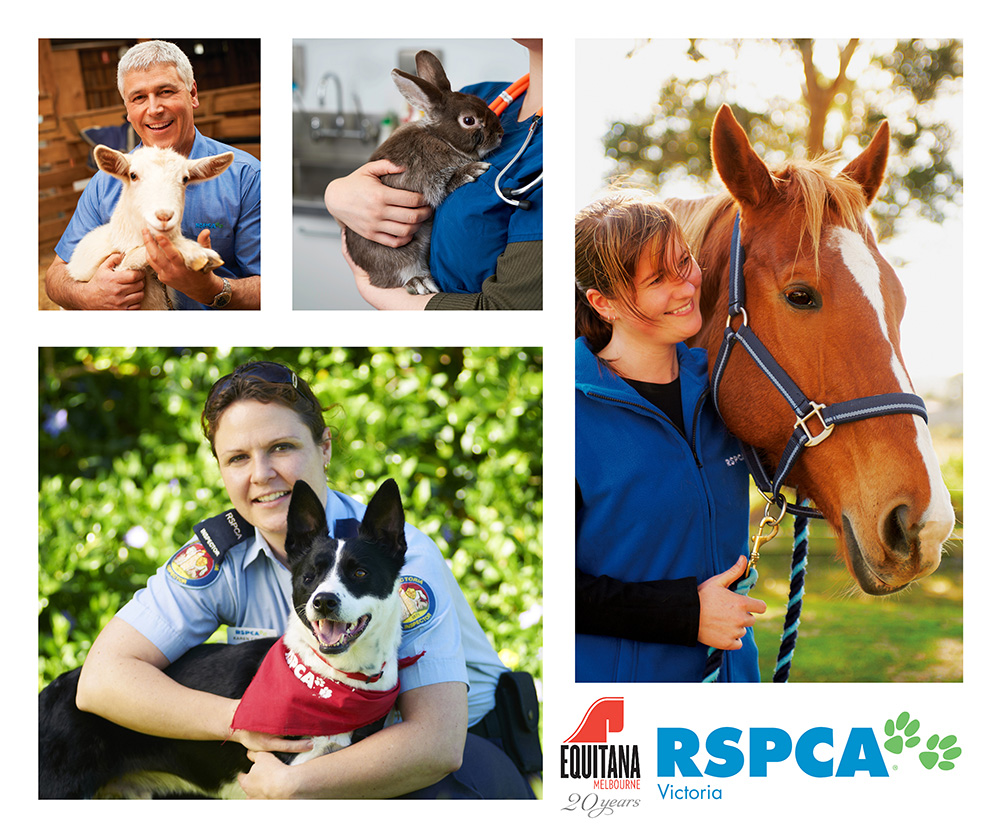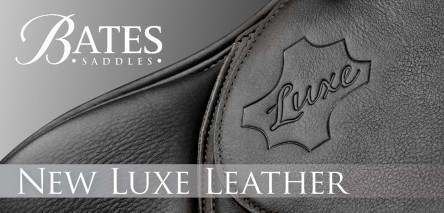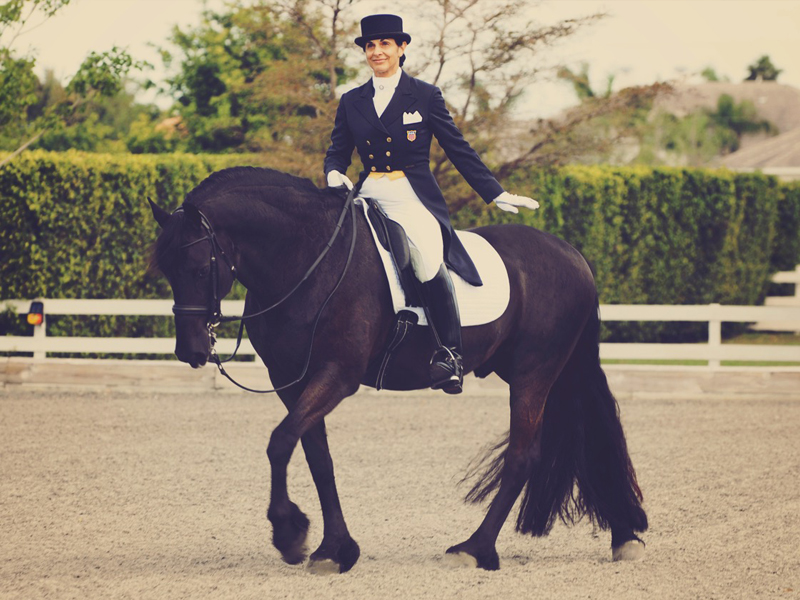
Jane Savoie
A few moments with Jane Savoie…
As appeared in issue 15 of BHM 2014
Photos: Rhett Savoie | By: Michaela Wake
 Jane Savoie was born and raised in Massachusetts, USA. She studied at the University of Massachusetts at Amerherst and was awarded a Bachelor of Science (Animal). Horses have always been an integral part of her life, and Jane rode hunters as a child, evented through college, and finally found her niche in dressage in 1976 when she relocated to Vermont and ran the riding program at the Vershire School Stable from 1976 – 1980.
Jane Savoie was born and raised in Massachusetts, USA. She studied at the University of Massachusetts at Amerherst and was awarded a Bachelor of Science (Animal). Horses have always been an integral part of her life, and Jane rode hunters as a child, evented through college, and finally found her niche in dressage in 1976 when she relocated to Vermont and ran the riding program at the Vershire School Stable from 1976 – 1980.
Since 1980, Jane has been a motivational and keynote speaker, author and co-collaborator, dressage instructor, competitor and trainer, travelling clinician, and has home bases in both Vermont and Florida. She was the reserve rider for the Olympic Dressage team at Barcelona in 1992, and dressage coach for the Canadian 3DE team at the 1996 Olympics in Atlanta. The year 2000 saw her head Down Under to Australia, where she coached several 3DE riders from the US, Canada and Belgium in preparation for the Olympics.
Under Jane’s expert tuition, US Dressage Team Member Susan Blinks and her mount Flim Flam helped her team score the Olympic Bronze medal. Jane has coached Sue and Flim since he was a green three year old, so this accomplishment held a lot of meaning for both Jane and Sue.
At the 2004 Athens Olympics, Jane was again accompanying the Canadian 3DE Team, and was an integral part in several of the riders achieving their personal best dressage scores, with an overall result of tenth as a team.
For many years, Jane’s faithful dressage partner has been the now-seventeen year old Grand Prix Friesian gelding, Moshi. Moshi is so popular throughout the dressage scene in the US that he has his own blog and regularly writes to his readers to share his view on life as a dressage horse with Jane, and of course on the general goings-on about the place! To read more of Moshi’s adventures (and the wonderful advice he gives to other horses and humans alike!), you can find his blog on Jane’s website at http://www.janesavoie.com/category/motivation-from-moshi/
 Michaela Wake had the opportunity to put some questions to Jane about all things dressage, baroque and Friesian, and here’s how things unfolded:
Michaela Wake had the opportunity to put some questions to Jane about all things dressage, baroque and Friesian, and here’s how things unfolded:
Jane starts off recalling how she was first introduced to the Friesian breed and what exactly it was that piqued her interest and made her decide to purchase her very own Black Pearl.
Jane: “I think it was a little over twenty years ago. I was at Equitana in Kentucky and I had a booth near Proud Meadows Friesians, who were doing a lot of demonstrations, so whenever they went by my booth into the arena, I had a chance to see them, and I was completely taken by how beautiful they were! Their presence, their nobility, their colour…everything about them. I thought, ‘These are the most beautiful horses I have ever seen, and I WANT ONE!’ So I made up my mind then and there that I wanted one of these fairytale horses.”
Two years later, the dream became reality for Jane, with the help of internationally-acclaimed dressage rider Sabine Schut-Kery (who at that time, was riding with Proud Meadows). Sabine found the then five-year-old gelding, Moshi (Moshi is his stable name, his ‘real’ name is Menno) and thought Jane should take him on, albeit sight unseen. Sabine assured Jane that he was a very forward-thinking horse with three good gaits.
“Proud Meadows were wonderful, they said…they wanted to see what would happen if a ‘non-traditional breed’ was trained with classical methods, and how far I could take him in his training. They understood that chemistry is chemistry though, and as nice a horse as he is, that once I got him (since I had not sat on him before he came to me), that if we didn’t click, then he could go back to Texas and they would find something else for me. I fell madly in love with him from the beginning, there was no way that you can’t. He’s just THE sweetest horse on the face of the earth, with a wonderful, wonderful work ethic. There was no going back for Moshi.”

MW: Do you find Friesians different to train or work with than other breeds? If so, how?
Jane: “In a way, they are different, but I use the same system to train Friesians as I do any other horse, which is the training scale. I go by the training scale, but I have to spend more time thinking about different ingredients in the training scale, like honest connection, than I would perhaps for another type of horse.
So, I think that they’re different really in a couple of different ways. Number one, you have to be sure (well, you would with any horse), that because they’re so placid and laid-back by nature, that you don’t get into the trap of using more leg, more leg, more leg…that you teach the horse to…number one, go on his own and number two, be reactive to light aids. They really need to think forward in both those aspects. Responsibility for their own energy, and reactivity to the driving aids.
Also, I think that just by their basic conformation, with this high set-on neck, low back, high hips…like I said, connection gets to be a real issue; as far as having them honestly connected, from behind, over the back, through the neck, into your hand…as opposed to just riding a horse who’s neck is arched and back is low.
The other thing is that they’re not bred to canter, they’re bred to trot. Often times the canter needs a lot of attention. That was one of the main things that I had to work on with Moshi. When I first got him, I remember the first canter that I had down the long side…and the ring that I was in was very large, it’s longer than a normal dressage arena, and I picked up left-lead canter, and I think I went down the long side in about five strides, and each of those strides had about seventeen beats, which is a real trick when you only have four legs! [Jane makes a noise that is a striking combination of thundering heart and irregular hoofbeats combined!] It was really long and strung out, and there was no three-beat canter in there, it took me quite a while to develop a three-beat canter, and if I wasn’t careful, that three-beat canter could easily degenerate into four beats. A lot of the basic work the first couple of years was just working on and developing a pure canter.”
MW: Is there anything you think Friesians find particularly easy when it comes to dressage? Or alternatively, particularly hard or challenging?
Jane: “The piaffe and passage…and the transitions, piaffe, passage…just fell into my lap, like a gift. You could set your clock by the regularity of the rhythm for both piaffe, passage and the transitions. I could do it on a thought. So that was really nice that that was so easy for him to do.”

MW: Is strength/stamina training different for Friesians than other breeds in your experience?
Jane: “I think the only thing that I need to be really careful of is their sensitivity to heat, that they’re not…that they don’t get overheated, they don’t do well in the heat, they’re not hot weather breeds. When Moshi first came from Holland, he immediately stopped sweating. I tried all kinds of the normal type things like OneAC, you know…stuff that you would get from the vet, and interestingly enough, the thing that kick-started his sweating was the cheapest dark beer I could find. He would have an adult beverage every evening (which he truly enjoyed!), with his dinner, and that kick-started his sweating, and then he was okay. So that’s the main thing that I would be concerned with, particularly importing a Friesian, that you keep an eye on that they do sweat, and that they don’t really love the heat, so that your work in that case, would be slower, shorter, whatever…to allow them not to get stressed.”
MW: If you could give just one piece of advice to anyone with a baroque horse as they work their way through the dressage levels, what would it be?
Jane: “I would give two pieces of advice. The first is to make sure that the horse is reactive to light aids. In other words, that the horse is in front of the driving aids, but then secondly, it’s really, really important that the horse is honestly connected, that you don’t just ride an arched neck, where the horse is posing on the bit, because you’re going to run into problems. You might make it through second level okay, but when it comes time to teach those flying changes, if the horse isn’t over his back, you’re going to have a really, really difficult time with flying changes, with doing clean flying changes.
So connection, connection, connection…the third ingredient in the training scale.”

MW: Do you think many judges (or indeed, anyone else, for that matter!) have trouble looking past the feather and ‘cart horse’ mentality when it comes to Friesians in the dressage arena? What do you say to this sort of attitude?
Jane: “I have never experienced any kind of prejudice…maybe I’ve just been lucky and I’ve had good judges…but I get comments like “super horse,” or just comments on the training of the horse. So I think that the really good judges can look past different breeds and different colours and different styles of horses, and just comment on the training a’la the training scale. Is the training correct? I haven’t really encountered any kind of prejudice.”
MW: Is there a piece of advice that you have been given over the years that has stuck with you and you still find yourself referring to, day-to-day? If so, what was it?
Jane: “A piece of advice that has been given to me over the years, that I still refer to day after day is the half halt. It is the doorway through which you do every change of gait, movement, or exercise. I think that’s what separates amateurs from professionals. Amateurs often ride from movement to movement if they’re doing a first level dressage test, they think of “I do a ten metre circle, and then I’m going to do a leg yield, and then I’m going to do a lengthening across the diagonal.” Whereas a professional thinks of it in terms of the connective tissue, “I do a half halt to balance my horse, to bring my horse to a more perfect state of balance as I go from the long side, into the circle, and then as I get ready to leave the circle, I give another half halt, and as I start my leg yield, I give another half halt, and as I finish my sideways part of the leg yield to go straight forward again, I give another half halt, and in the corner before the lengthening, I give another half halt.
So focusing on the connective tissue in between the movements, the half halt is the name of the game for me.”
MW: Who/what inspires you and who are your classical influences?
Jane: “What inspires me? Anything that registers on what I call my ‘goosebump scale’, because it simply is beautiful. Whether it’s dancing or riding, or whatever. ‘Beautiful’ for me includes several things, that there’s harmony, that there’s joy, that there’s a partnership, that it appears that the rider is beside the point, that the horse willingly, happily, on his own, does what he’s asked to do, and the rider just sits absolutely quietly, just sits up there like a queen or a king, just sits up there doing nothing. The aids should be refined, the aids should be invisible.”
MW: What do you look for in a dressage horse (of any breed)?
Jane: “I look for a sound horse with three pure gaits and a good brain. I want a horse that’s a volunteer. I would take a horse with less extravagant gaits, as long as he’s sound, and he has a good brain. I know I can develop the gaits through good classical training, but the soundness, without soundness you have nothing, and without the good brain, training cannot progress as happily as both partners would like it to be.”
MW: When you hear/read the term ‘baroque horse’, what do you see in your mind?
Jane: “When I hear the term ‘baroque horse’, what do I see in my mind? I see that round, romantic throwback to another era…like the thirteen or fourteen hundreds…fairytale type horse. The horse that little girls dream of with the long flowing mane, and long tail, and that muscular body, and round arched neck…sort of like a Grecian statue…really, really beautiful.”

MW: How would you sum up the Friesian breed in a nutshell, when describing them to someone who has never heard of them? I constantly get the “Friesians? Aren’t they cows?!” comment when I’m out and about with mine!
Jane: “I think that the Friesian breed is wonderful. I think the horses are beautiful…like I said, romantic, fairytale type horses. For the most part, docile…with a very, very sweet temperament, very people oriented. I think of Moshi as being like a black lab in a horse suit. He’s just…it’s like having a great big dog…he would be in your pocket, he’ll be in the paddock and I can call to him, and as much as he loves his grass, his head will pop up like a periscope on a submarine, and he’ll come trotting across the field to me as fast as he can. I love that bond, that relationship. It would be the same as calling my dog over to me.”
MW: Could you tell us something funny that has happened to you and Moshi in the past that still makes you smile or laugh when you think about it?
Jane: “I’ve taught…I guess I’m a little strange, but I’ve taught Moshi some dog tricks…I go, “Speak Moshi, speak!” and he goes ‘nicker, nicker’ [Jane does a very good interpretation of a horse nickering gently!] On the other hand, my dog Indy (my golden retriever), he can do Spanish walk, so they’re pretty much interchangeable in my mind as far as their wonderful temperaments, personalities and their connection with humans.”
MW: What do you do with your horses outside the dressage arena? How do you have ‘time out’ from training with them?
Jane: “The horses have at least one complete hack day a week. Usually on work days, they hack a little bit before they go into the ring and/or after they go into the ring. On occasion when the lake…well, it’s more like a pond…is deep enough, we let them go swimming, we will work over poles, we will play with them, we will teach them tricks using clicker training, anything to develop that bond, to play with the horses and make it fun for everybody.”

MW: Do you travel much for clinics anymore? Would coming to Australia be a possibility?
Jane: “In recent years, I’ve been travelling less and less to do clinics, because I have so much going on at home here, and yes, in the future, when I finish up some of my current projects, I would love to go to Australia. I have had many requests to go to Australia and New Zealand, and it’s something that I would love to do. It’s just a matter of the additional travel time there and back, in addition to the time I would spend there, that right at this moment I’m not able to block out that much time to do that. But I’m not saying no for the future!”
We would like to thank Jane Savoie very much for her time and contribution. We look forward to hearing more of Jane and Moshi’s adventures as they continue to teach and open the eyes of so many dressage riders, both new and experienced, in their quest to become better partners for their equine friends.
Find out more at http://www.janesavoie.com
Have you enjoyed this article? Want more ? Then subscribe to our quarterly printed magazine – click here
